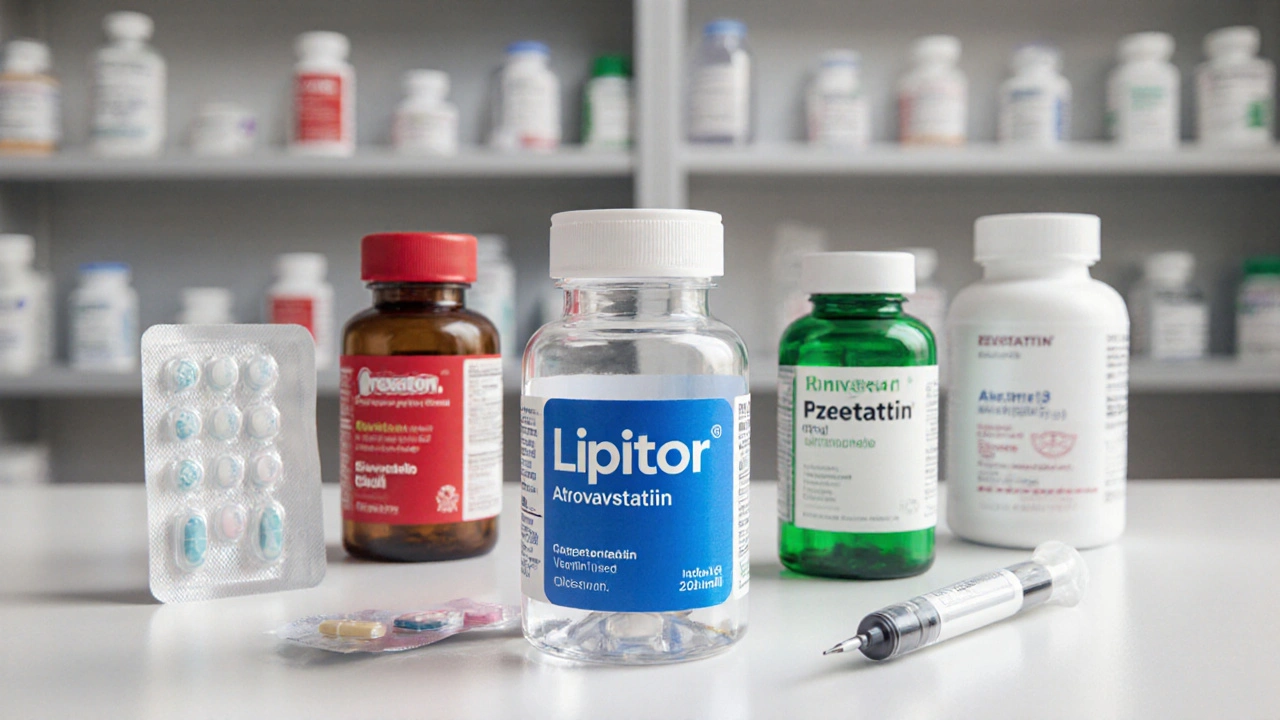A detailed side‑by‑side comparison of Lipitor (atorvastatin) with other statins, ezetimibe, and PCSK9 inhibitors, covering effectiveness, safety, cost, and when to choose each option.
Atorvastatin: What You Need to Know
When working with Atorvastatin, a prescription medication that belongs to the statin family and is used to lower blood cholesterol levels. Also known as Lipitor, it targets the liver enzyme HMG‑CoA reductase to reduce the production of "bad" cholesterol. In everyday terms, taking Atorvastatin helps keep the cholesterol numbers the doctor watches from climbing too high.
The broader class, statins, drugs that inhibit HMG‑CoA reductase, thereby decreasing the synthesis of cholesterol in the liver. Statins are available in various strengths and formulations, but they all share the core goal of cutting down the amount of low‑density lipoprotein (LDL) that circulates in the blood. By limiting LDL, statins set the stage for healthier arteries and a lower chance of a heart‑related event.
One of the main targets, LDL cholesterol, the primary carrier of cholesterol that can deposit in arterial walls and form plaques, is often called "bad cholesterol" for a reason. High LDL levels are directly linked to the buildup of fatty deposits that narrow arteries. When Atorvastatin brings LDL into the normal range, the body faces less pressure to form these plaques, which translates into smoother blood flow.
The ultimate health outcome we care about is cardiovascular disease, a group of conditions affecting the heart and blood vessels, including heart attacks, strokes, and peripheral artery disease. Research shows that reducing LDL by even 1 mmol/L can cut the risk of major cardiovascular events by about 20 %. Therefore, the chain "Atorvastatin lowers LDL, which reduces cardiovascular disease risk" is a core concept for anyone managing heart health.
Like any medication, Atorvastatin comes with a side‑effect profile worth noting. The most common complaint is muscle discomfort, ranging from mild aches to a rare condition called rhabdomyolysis. Patients may also see modest rises in liver enzymes, which doctors monitor through routine blood tests. Understanding these signals early helps keep the therapy safe and effective.
Drug interactions are another practical concern. Grapefruit juice, for example, can increase Atorvastatin levels in the bloodstream, raising the chance of muscle-related side effects. Certain antibiotics, antifungals, and HIV medications also interfere with the same metabolic pathway. Always tell your healthcare provider about over‑the‑counter drugs, supplements, or dietary habits that might clash with your statin regimen.
Dosage choices vary based on how high the cholesterol numbers are and what other risk factors exist. Some people start with a low dose and titrate up, while others begin at a higher dose if the numbers are significantly off target. Generic versions contain the same active ingredient as the brand name, offering a cost‑effective way to stay on therapy without compromising quality.
Below you’ll find a curated collection of articles that dive deeper into each of these areas – from how Atorvastatin compares with other cholesterol‑lowering drugs, to tips for managing side effects, to the latest research on statin therapy and heart health. Use this guide as a springboard to make informed decisions about your cholesterol plan and overall well‑being.

